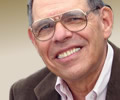The US Preventive Services Task Force has issued a new draft recommending biennial screening mammography for women ages 40 to 74 years. This recommendation has received widespread notice in the lay press. Workers in the field along with breast cancer advocates want even more (annual) screening. Everybody commenting on this recommendation seems to support it without reservation. The Task Force linked to a Draft Evidence Review published the same day as the recommendation – May 9, 2023. None of the articles I have seen comment or analyze this review. It is appended below. The review contains no recommendation for initiating routine breast cancer screening at age 40. It also contains no evidence suggesting such a change. There is another paper linked on the USPSTF website (the one above) that uses computer modeling. It predicts mammography will reduce breast cancer mortality in women aged 40-49. But this is a prediction not a conclusion based on clinical trials. Interestingly, none of the models seemed to benefit black women. Jumping from computer models to clinical practice recommendations with no studies in between is a leap too far.
This article (below) briefly reviews the evidence (or lack thereof) that led the Task Force to update its recommendation about breast cancer screening. The document is full of the latest data on breast cancer and is contains much useful data There are numerous abbreviations throughout the piece some of which unfortunately are undefined. I could figure out most of them, but not all.
This Evidence Synthesis is the basis, or should be, for the proposed new screening recommendations. The following two quotations relate to screening women in their 40s. As no evidence for decreasing the initial age of routine breast cancer screening is given, I am left uncertain as to the reason for the new guideline.
“Results of nine RCTs (Random Clinical Trials) individually and collectively indicate no statistically significant reduction in breast cancer mortality for women screened at ages 40 to 49” (p 50).
“Our review did not identify any completed studies comparing outcomes for people with different screening initiation ages that met the review inclusion criteria. Study design challenges limit rigorous research on this topic. Studies comparing a group screened in their 40s with a cohort initiating screening at age 50 ten years later are subject to risk of bias since cancers detected and treated a decade apart experience different screening and treatment protocols.” (p 58)
Breast cancer mortality is much greater in black women than in other groups. The following quotation addresses this issue in relationship to mammography.
“Based on self-reported BRFSS (undefined abbreviation) data from 2020, 78 percent of all women aged 50 to 74 reported having a mammography in the past two years. For non-Hispanic Black women, the rate was 84.5 percent, followed by Hispanic women (79.8%), Native-Hawaiian/Pacific Islander women (79.7%), Hispanic women (79.8%), non-Hispanic White women (77.8%), and American Indian/Alaskan Native women (68.7%). Non-Hispanic Black women also reported higher levels of screening than non-Hispanic White women from age 40 to 44 (60% vs. 54%) and age 45 to 49 (76% vs. 68%).” (p 48)
As access to mammography does not seem to explain the increase mortality rates in black women, other explanations will have to be addressed. Access to effective treatment, intrinsic biological factors, inconsistent follow-up are among the possibilities that may account for the disparate outcome in black women.
While this analysis doesn’t seem to explain the reason for the USPSTF’s proposed change in breast cancer screening, it is full of useful information that clinicians or anyone else interested in the subject will find informative.
[The figure above the title taken from a TV station’s report on the new screening guidelines is typical of the confusion that often accompanies lay reporting on medicine. The age was moved down to 40, not up.]






